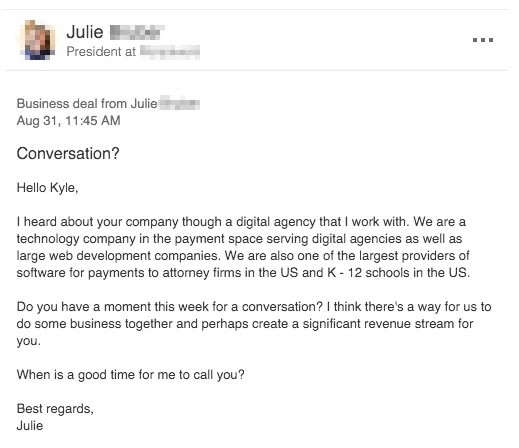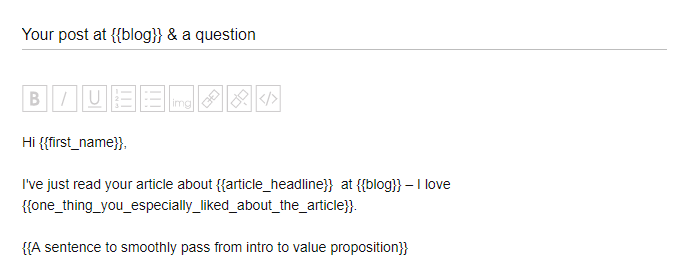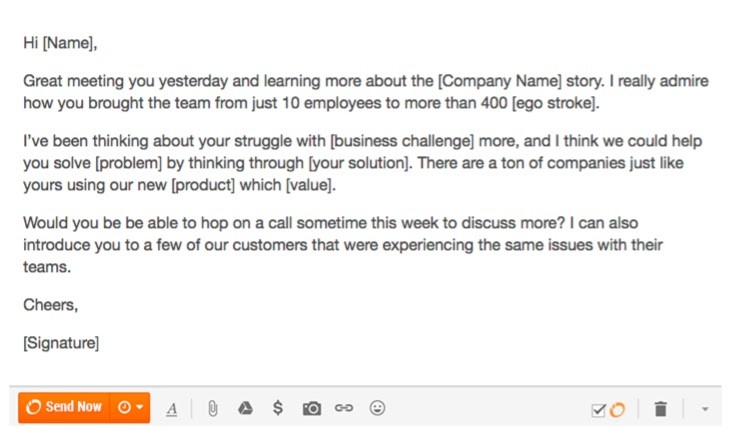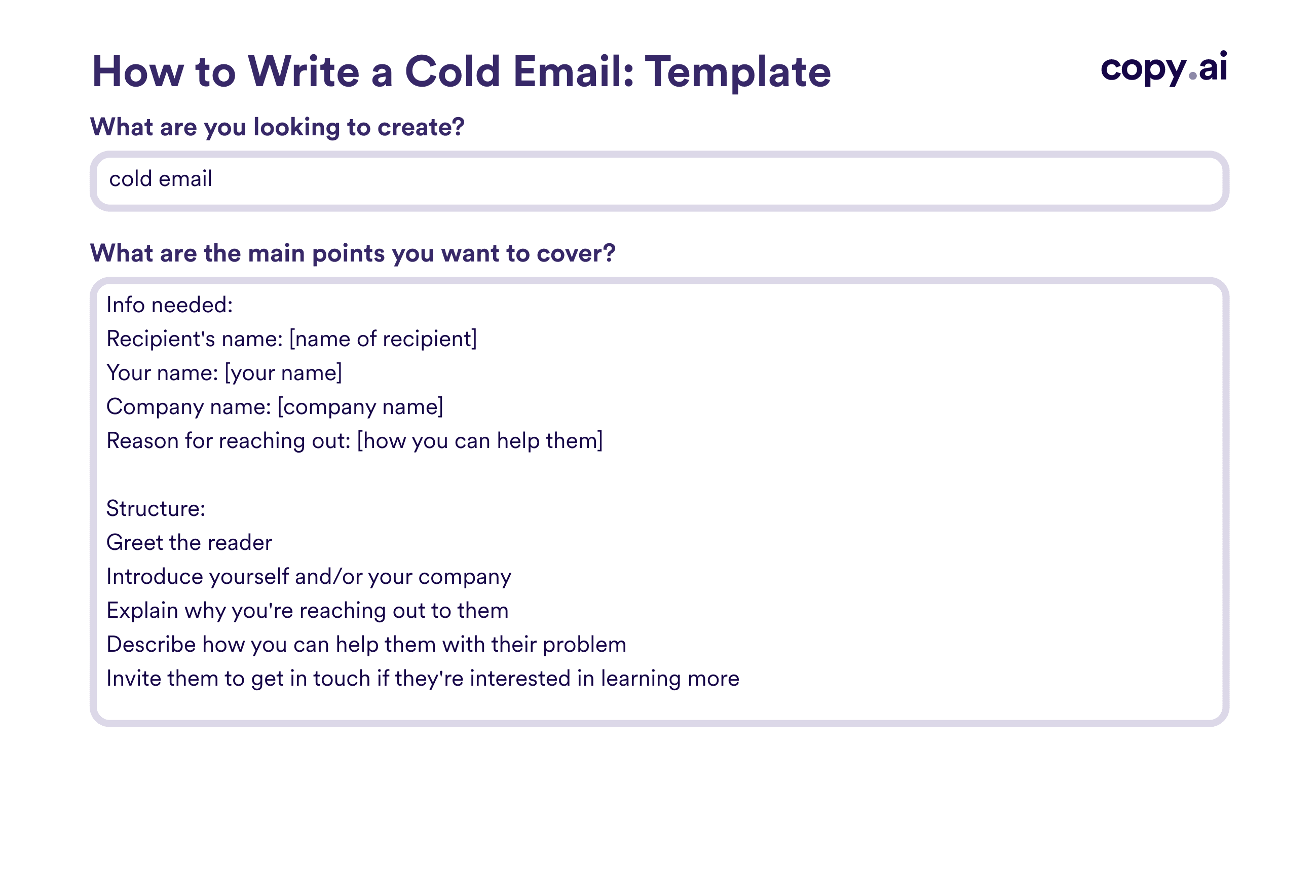Cold emails can open doors to new opportunities. They connect you with potential clients or partners.
But writing an effective cold email isn’t easy. Crafting a good cold email requires skill and strategy. You need to grab attention quickly and hold it. The goal is to make a connection and spark interest. This can be challenging, especially when the recipient doesn’t know you.
In this guide, we will explore the key elements of writing cold emails. You will learn tips and tricks to make your emails stand out. Whether you’re looking to grow your business, build partnerships, or simply expand your network, this guide will help you write cold emails that get results.

Credit: adoric.com
Crafting An Engaging Subject Line
Crafting an engaging subject line is crucial for cold emails. It’s the first thing your recipient sees. It decides if they’ll open your email or not. A well-crafted subject line can make all the difference. It should be compelling and direct. Here are some tips to help you create one.
Keep It Short And Sweet
Long subject lines often get cut off. Aim for 6-10 words. This keeps it clear and to the point. Try to convey the main message quickly. Use simple words. Avoid jargon or complex terms. Remember, you want to catch their attention fast.
Avoid Spam Triggers
Certain words can send your email to the spam folder. Avoid using “free,” “urgent,” or “guaranteed.” These words raise red flags. Also, don’t use too many exclamation marks. Excessive punctuation looks unprofessional. Keep your subject line clean and straightforward.
Personalizing Your Message
Writing cold emails can be daunting. Personalizing your message can make it more effective. A personalized email shows you care and have done your homework. It increases the chance of a response. Let’s explore how to personalize your cold emails.
Research Your Recipient
Before writing, research your recipient. Understand who they are and what they do. Visit their LinkedIn profile. Look at their recent activities and posts. Check their company’s website. Know their role and responsibilities.
Ask yourself questions like:
- What is their job title?
- What are their interests?
- What challenges do they face?
Use this information to tailor your message. Show you have taken the time to understand them. This makes your email stand out.
Use Their Name
Always use the recipient’s name in your email. It adds a personal touch. Avoid generic greetings like “Dear Sir/Madam”. Instead, use their first name if appropriate. For example:
| Generic | Personalized |
|---|---|
| Dear Sir/Madam | Hi John |
| To whom it may concern | Hello Jane |
Using their name shows respect. It makes the email feel more human. It increases the likelihood of a reply.
Opening With A Strong Hook
Cold emails can be a powerful tool for making connections, but to get noticed, you need to start with a strong hook. The first few sentences must grab the reader’s attention and make them want to read more. An engaging opening sets the tone for the rest of your email. Here are two effective ways to hook your reader right from the start.
Start With A Question
Asking a question is a great way to engage the reader. It makes them think and creates a sense of curiosity. For example:
- Do you struggle with finding new clients?
- Are you looking for a way to improve your marketing?
These questions relate to common challenges and draw the reader in. They can’t help but read on to find the answer or solution you offer.
Mention A Common Interest
Another effective hook is to mention a common interest. This builds a connection and shows that you have done your homework. For example:
- I noticed we both follow [Industry Leader] on LinkedIn.
- We both attended the [Recent Event] last week.
By highlighting a shared interest, you create an immediate bond. This makes your email more personal and less like a generic message. The reader feels understood and is more likely to respond.
Clearly Stating Your Purpose
One of the keys to writing effective cold emails is clearly stating your purpose. This means letting the recipient know why you are contacting them. A clear purpose helps the reader understand your intentions and makes it easier for them to respond. Without a clear purpose, your email may be ignored or deleted.
Be Direct And Specific
Be direct in your email. Start with a clear statement of your purpose. This shows respect for the recipient’s time. For example, if you want to schedule a meeting, say so in the first sentence. Use specific language to explain what you need. This helps the reader understand your request quickly.
Here is an example of a direct and specific email opening:
Subject: Meeting Request - Project Collaboration
Dear [Recipient's Name],
I am reaching out to schedule a meeting to discuss a potential collaboration on a project.
This opening clearly states the purpose of the email and what you are asking for.
Avoid Vague Language
Avoid using vague language in your emails. Vague language can confuse the reader. It may make your email seem unimportant or unclear. Be as specific as possible about what you need and why.
Here is an example of a vague email opening:
Subject: Let's Connect
Dear [Recipient's Name],
I hope this email finds you well. I wanted to reach out to discuss some opportunities.
This opening is vague and does not clearly state the purpose of the email. The recipient may not understand what you want and may ignore the email.
By avoiding vague language and being direct and specific, you can increase the chances of getting a response to your cold email.
Adding Value To Your Email
Adding value to your cold email can make a huge difference. It shows the recipient you respect their time. It also makes them more likely to respond. In this section, we will explore how to offer something useful and include relevant information.
Offer Something Useful
Your email should provide something valuable. Think about what the recipient needs. Offer insights, tips, or resources. This shows you have done your homework. It makes your email more appealing. For example, share a tip related to their industry. Or, provide a link to a helpful resource. The goal is to give them something they can use.
Include Relevant Information
Include details that matter to the recipient. Personalize your message. Use their name and mention their company. Reference a recent event or achievement. This shows your email is not just a template. It makes the recipient feel special. Relevant information makes your email stand out. It also increases the chances of getting a response.

Credit: woodpecker.co
Creating A Compelling Call To Action
Creating a compelling call to action (CTA) is vital in cold emails. The CTA directs the recipient on what to do next. A clear and strong CTA can increase response rates. Make it easy for the recipient to take action. Below are key strategies to craft an effective CTA.
Be Clear And Actionable
Your call to action should be direct and easy to understand. Use simple language. Avoid jargon or complex terms. The recipient should know exactly what you want them to do. For example, “Schedule a call” is better than “Consider discussing further.”
Use verbs to encourage action. Verbs like “register,” “download,” or “reply” are good choices. These words motivate the reader to act. Keep the instructions short. This makes your email more effective and engaging.
Set A Deadline
Adding a deadline creates urgency. It encourages the reader to act quickly. For instance, “Reply by Friday” gives a clear timeline. This can prevent procrastination. A deadline also shows that your time is valuable.
Be specific about the date or time. Vague deadlines like “soon” are less effective. A precise deadline makes the action feel more immediate. It helps the reader prioritize your email.
Formatting For Readability
Writing cold emails can be challenging. One key aspect is formatting for readability. Proper formatting ensures your email is easy to read and understand. This can increase the chances of getting a response. Below are some tips to help you format your cold emails effectively.
Use Short Paragraphs
Long blocks of text can be overwhelming. Short paragraphs are easier to read. Keep each paragraph to two or three sentences. This makes your email more inviting to read.
Include Bullet Points
Bullet points help break up text. They make information easier to digest. Use them to highlight key points. For example:
- Introduce yourself briefly
- State the purpose of your email
- Highlight the benefits
- Include a call to action
This structure helps the reader follow along without getting lost.

Credit: adoric.com
Following Up Effectively
Writing cold emails is just the start. The real challenge lies in following up effectively. Many recipients ignore the first email. This makes follow-up emails crucial. A well-timed and polite reminder can make all the difference. Below, we explore how to follow up effectively.
Timing Your Follow-up
Timing is everything in follow-up emails. Send your first follow-up three days after the initial email. This gives the recipient enough time to read and consider your message. If you don’t get a response, send another follow-up after a week. Avoid sending too many emails in a short span. This can annoy the recipient and reduce your chances of a reply.
Crafting A Polite Reminder
A polite reminder can nudge the recipient to respond. Start by referring to your previous email. Keep the message short and to the point. Politeness is key. Use phrases like “I hope this email finds you well.” Gently remind them of your initial message. Offer to provide more information if needed. Close with a friendly sign-off. This shows respect for their time and encourages a response.
Frequently Asked Questions
What Is A Cold Email?
A cold email is an unsolicited message sent to potential clients. It aims to establish a connection and generate interest.
How To Write An Effective Cold Email?
Start with a compelling subject line. Personalize the email. Be concise and clear. Include a strong call-to-action.
How To Personalize Cold Emails?
Use the recipient’s name and reference their company or interests. Mention mutual connections or shared goals.
What Should I Avoid In Cold Emails?
Avoid being too salesy or pushy. Don’t use generic templates. Avoid long paragraphs and irrelevant information.
Conclusion
Mastering cold emails takes practice. Start with a clear subject line. Grab attention quickly. Be direct and concise. Show genuine interest in the recipient. Personalize each email. Follow up respectfully. Remember, persistence pays off. With these tips, your cold emails can build connections.
Good luck!
